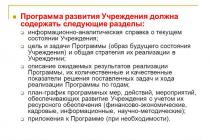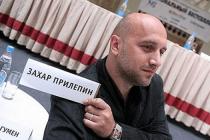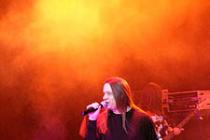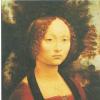Royal power cannot be imagined without its symbolic attributes, such as the crown, orb and scepter. These regalia are generally accepted - in addition to Russian rulers, they were and are used by kings and emperors of all powers. Each of these items has a special meaning and a unique history.
Apple Power
The power (from the Old Russian "d'rzha" - power) is a golden ball covered with precious stones and crowned with a cross (in the Christian era) or other symbols. First of all, it personifies the sovereign power of the monarch over the country. This significant item came to Russia from Poland during the time of False Dmitry I and was used for the first time at his crowning ceremony, bearing the name “power”.It was not for nothing that the state was called an apple; it resembles not only its roundness - this fruit is an image of the world. In addition, this deeply symbolic object signifies the feminine principle.
With its round shape, the power, just like, personifies the globe.
The image of the power also has religious overtones. Indeed, on some canvases Christ was depicted with her, as the Savior of the world or God the Father. The sovereign apple was used here in the Kingdom of Heaven. And through the rite of anointing, the powers of Jesus Christ are transferred to the Orthodox king - the king must lead his people to the final battle with the Antichrist and defeat him.
Scepter
According to legend, the scepter was an attribute of the gods Zeus and Hera (or Jupiter and Juno in Roman mythology). There is evidence that the pharaohs of Ancient Egypt also used an object similar in meaning and appearance to a scepter.The shepherd's staff is the prototype of the scepter, which later became a sign of pastoral power among church ministers. European rulers shortened it, resulting in an object that is known from medieval paintings and numerous historical notes. In shape, it resembles a rod made of gold, silver or other precious materials and symbolizes masculinity.
Often Western European rulers had a second staff in addition to the main one; it acted as a symbol of supreme justice. The scepter of justice was decorated with the “hand of justice” - a finger indicating deception.
At the crowning of Fyodor Ioanovich in 1584, the scepter became a full-fledged sign of autocratic power. And a little less than a century later, he and the state began to be depicted on the coat of arms of Russia.
Charles II (1630-1685) on the throne
Oliver Cromwell, Lord Protector of Britain from 1653 to 1658, who executed King Charles I, did not play the most plausible role in the history of his country. He not only undermined the foundations of the absolute monarchy, but also, out of hatred for monarchs, destroyed all the most valuable historical symbols of royal power: crowns, sceptres, orbs, thrones, robes. Some of them were melted into coins, some were stolen. And today in museums in London, including the Tower, royal treasures that were created after 1660 are kept.
Regalia - signs of royal, imperial or royal power - have been known since ancient times and are approximately the same in developed countries: a crown, an orb, a scepter, a mantle, a sword or sword, a throne. And if you look closely at the traditional ceremonial images of English kings, they are seated on a throne, with a crown on their head, an orb and a scepter in their hands. You can name other attributes and symbols of royal power that are not so noticeable, for example, a shield, knightly armor.
The most important symbol of royal power is the crown. It is usually made of gold and decorated with precious stones. According to researchers, the prototype for the crown was the Roman crown. It was the coronation that for a long time was considered a legal, traditional and hereditary procedure for the monarch to assume power and its attributes.
Coronation also meant that the new monarch was allowed to continue the hierarchical hereditary chain of the previous rulers. In addition, coronation is also a very important religious ceremony for the people, during which the sacrament of anointing for the kingdom is carried out. Thus, the entire coronation ritual has the special meaning of God’s blessing on the kingdom.
The first crown of England - the crown of St. Edward - was not preserved; it turned out to be a victim of the very process of destruction of all attributes of royal power undertaken by Cromwell. The crown that can be seen in the Tower is a copy of the destroyed crown of St. Edward. It was created for the coronation of King Charles II in 1661. This crown is decorated with diamonds, rubies, sapphires and emeralds and is considered the most valuable in the world. Among the precious stones that adorn it, special mention should be made of the Stuart sapphire and the Black Prince ruby.
The Imperial State Crown, which the current reigning Queen Elizabeth II wears during the opening of the British Parliament or on the occasion of other state occasions, was commissioned by Queen Victoria in 1837. Queen Victoria herself wore this crown during her coronation on January 28, 1838.
Other royal regalia include the orb and the scepter - they are also symbols of royal power, signs of royal dignity. The power with its round shape goes back to the globe. It was held in the left hand and the scepter in the right. The scepter was an attribute of the gods Zeus (Jupiter) and Hera (Juno); it was one of the signs of dignity of Greek and Roman rulers.
The Royal Scepter of Great Britain is decorated with the world's largest diamond, the Star of Africa, which weighs 530 carats and is the largest
The ceremonial state clubs are part of the world famous Cullinan Diamond.
From the collection of the kings of Great Britain, one should also highlight the Great State Sword, which was made at the end of the 17th century. Its scabbard is decorated with diamonds, emeralds and rubies.
Only if he has all the regalia does the king have full supreme power: he is the best of the best, he is the main military leader, his words are the law for all loyal subjects.
Another crown, created for the 1937 coronation of Elizabeth, wife of King George VI, features the Kohinoor diamond, which means “mountain of light.” This is England's most famous jewel.
The Kohinoor diamond was “born” in India over 300 years ago. There is a belief that the Kohinoor diamond brings bad luck to men who own it. It was never sold for money, but was forcibly passed from one ruler to another. Finally, in 1849, he was sent to London in a forged casket, which was placed in a special chest, with guards by sea from Punjab (state of India). And in 1850 it was presented to Queen Victoria. In 1851, the priceless diamond was put on display at the World's Fair in London, and 6 million visitors were able to see it. And in 1937 it was inlaid into the center of the cross of the royal crown.
In 1947, India, a former colony of the British Empire, became independent. And the leaders of this country presented property claims to Great Britain. In particular, they demanded that the Kohinoor Diamond, which was considered a national treasure, be returned to them. This issue was not resolved then, but in 1953 it was again on the agenda. Once again, the British public decisively rejected all claims. The British made it clear to the Indians that they were not going to return the precious stone.
Currently, the coronation of kings occurs only in Great Britain. The current reigning Queen of Great Britain, Elizabeth II, is the only monarch crowned according to all the rules. In all other European countries, coronation is replaced by inauguration, or enthronement, without confirmation and laying on of the crown.
The coronation of Elizabeth II took place on June 2, 1953. Three weeks before the ceremony, Elizabeth, in order to feel confident in her new royal attire, began to wear the Imperial State Crown constantly. She didn't take it off even during breakfast.
For less formal events, Elizabeth also has spare crowns and a diadem, but they are not so majestic. The replacement crown is set with 2,783 diamonds and contains 273 pearls, 16 sapphires, 11 emeralds and 5 rubies.
They say that without a crown there is nothing royal about Elizabeth II. And if anyone happened to meet her on a London street or on the subway in a traditional private dress, he would not recognize her as the Queen of Great Britain.
Plunging back into the depths of centuries, let's try to figure out what the scepter and the power mean in Russian history.
The scepter is a figured staff. It was made of silver, ivory, gold, framed with gems and used heraldic symbols. In the history of Russia, the scepter is the successor to the royal staff, which is a symbol of the power of the great princes and kings.
Speaking about the symbols of monarchical power, we need to focus on the power - a golden ball with a cross and a crown. The surface of the sphere was usually decorated with gems and symbols. This name comes from the ancient Russian word “dzha”, which means “power”. The scepter and orb of the Russian tsars are the oldest of the insignias of autocratic power.
Sovereign balls, or sovereign apples - as they were called in Rus', also served as attributes of the power of Roman, German and other emperors.
Crowns in the Russian Empire
Dwelling on the regalia of the Russian emperors, it is worth highlighting that the Monomakh's Cap was used for coronations in the kingdom.

In Russia, the ceremony of the first imperial coronation was performed on the wife of Peter the Great, Ekaterina Alekseevna, who later became Catherine the First. It was for Catherine I that the first imperial crown in Russia was specially made.
Monomakh's hat - ancient regalia
Mention of the Monomakh's Cap appeared in the 16th century. in "The Tale of the Princes of Vladimir". It talks about Constantine Monomakh, a Byzantine emperor who ruled in the 11th century. Hence the name. Most likely, Ivan Kalita was its first owner. According to available art historical data, the Monomakh Cap was made in the East in the 14th century. This is the most ancient crown of Russia. It was not worn as an everyday headdress, but was used to crown Russian monarchs from 1498 to 1682. The crown consists of gold plates with patterns. At the top of the crown is a cross inlaid with precious stones. Monomakh's hat is framed with sable fur. The weight of the crown without fur is 698 grams.
Thus, the Monomakh Cap, like the scepter and the orb, has been a symbol of Russia since pre-Petrine times. By the way, it is credited with medicinal properties. Thus, it is believed that it can relieve various ailments, especially headaches.
Scepter and orb of Tsar Boris Godunov
The appearance of such concepts and objects as the scepter and the orb as symbols of the power of the Russian state is associated with the reign of Boris Godunov. They were ordered from craftsmen at the court of Rudolf II. Manufacturing took place in Eger (modern city of Heb). When creating the set, jewelers followed the traditions of the Renaissance.

And although there is a legend that says that the scepter and orb were sent back in the 11th century. Prince Vladimir Monomakh, in fact they were presented to Tsar Boris by the Great Embassy of Emperor Rudolf II, who reigned in 1604, they found their use as part of his great outfit.
Monomakh's scepter was made of gold with enamel details. Twenty diamonds, a large emerald, and other precious stones were used as jewelry. The orb has an enamel inlay. The details depict scenes from the reign of David. The orb is decorated with 37 large pearls, 58 diamonds, 89 rubies, as well as emeralds and tourmalines.
The crown is the most important regalia of Mikhail Fedorovich Romanov
The king owned the crown from the “Great Dress”. It was made in 1627 by deacon Efim Telepnev. He was the chief master at the Armory. The crown of the crown consists of two tiers. Below on the outer frame is an eight-pronged diadem. The crown is framed in sable fur with precious stones. After the 18th century, the crown of the “Great Dress” became the crown of the “Kingdom of Astrakhan”.

Lost regalia of the Russian Empire
Only some regalia have survived to this day. They found a worthy place to exist in the Armory, but many of them were irretrievably lost. These include the “Great Crown” of Tsar Feodor I Ivanovich. Speaking about this work of art, we must say about its indescribable uniqueness. The crown was made in Istanbul at the end of the 16th century. As a gift, Patriarch Jeremiah II of Constantinople sent the crown to Tsar Feodor I Ivanovich, who was the last of the Rurik family. The “Great Crown” was worn by kings only for important celebrations. Around 1680 the crown was dismantled. Subsequently, its details were used for the “diamond hats” of Ivan V and Peter I.
Crown, scepter and orb on the royal coat of arms
In 1604, False Dmitry, on his small seal, appeared with an image of three crowns under an eagle. This was the first time such an image appeared and did not last long. However, already in 1625, instead of a cross between the heads of the eagle, a third crown appeared. This image appeared under Tsar Mikhail Fedorovich on the small state seal. The same was done in 1645 for his son Alexei on the Great State Seal.

The orb and scepter were not on the coat of arms until the reign of Mikhail Fedorovich. In 1667, the state seal of Tsar Alexei Mikhailovich appeared with the image of the state regalia of power. For the first time on the fourth of June 1667, the king gave an official and clear explanation of the symbolism associated with the three crowns. Each of the crowns depicted on the coat of arms and seal corresponds to the kingdoms of Siberia, Kazan, Astrakhan. And the scepter and orb of Russia mean “Autocrat and Possessor.” And already in 1667, on December 14, the first Decree on the coat of arms appeared.
Crown, scepter and orb on the coat of arms of Russia
Centuries later, on December 25, 2000, the constitutional law “On the State Emblem of the Russian Federation” was adopted. This symbol of the state is represented by a heraldic shield. It is quadrangular and red. Its lower corners are rounded.

In the center is located with two heads, each of which is crowned with a small crown, and above them rises one large crown. The meaning of the three crowns is the personification of not only the sovereignty of the entire Russian Federation, but also its parts, that is, its subjects. The coat of arms also depicts a scepter and an orb. Photos of the regalia amaze with their beauty. The eagle holds a scepter in its right paw, and an orb in its left.
The scepter and the orb of Russia are symbols of a single state and power. Also on the eagle’s chest there is an image of a silver rider on a horse. A man kills a black dragon with a spear. It is allowed to reproduce the coat of arms of the Russian Federation not only in color, but also in a single color. If necessary, it can be depicted without a heraldic shield.
Scepter- a staff generously decorated with gems and crowned with a symbolic (usually a coat of arms: fleur-de-lis, eagle, etc.) figure, made of precious materials - silver, gold or ivory; along with the crown, one of the oldest insignia of autocratic power. In Russian history, the scepter was the successor to the royal staff - an everyday, and not ceremonial, symbol of the power of the kings and grand dukes, who once accepted these regalia from the Crimean Tatars as a sign of their vassal oath. The royal regalia included a scepter “made of one-horned bone three feet and a half long, set with expensive stones” (Sir Jerome Horsey, Notes on Muscovy of the 16th century) included in 1584 at the crowning of Fyodor Ioanovich. This insignia of power, presented at the altar of the temple by the Patriarch of All Rus' into the hands of the Anointed One of God, was then included in the royal title: “God in the Trinity, glorified by the mercy of the sceptre-holder of the Russian kingdom.”
The scepter was included in the Russian state emblem a century later. He took his traditional place in the right paw of the double-headed eagle on the 1667 seal of Tsar Alexei Mikhailovich.
Power- a symbol of monarchical power (for example, in Russia - a golden ball with a crown or cross). The name comes from the Old Russian "d'rzha" - power.
Sovereign balls were part of the attributes of power of the Roman, Byzantine, and German emperors. In the Christian era, the orb was crowned with a cross.
The orb was also the insignia of the Holy Roman Emperors and English kings, starting with Edward the Confessor. Sometimes in fine art Christ was depicted with an orb as the Savior of the World or God the Father; in one of the variations, the orb was not in the hands of God, but under his foot, symbolizing the celestial ball. If the scepter served as a symbol of the masculine principle, then the orb - of the feminine.
Russia borrowed this emblem from Poland. It was first used as a symbol of royal power at the crowning ceremony of False Dmitry I. In Russia it was originally called the sovereign apple. Since the reign of Russian Emperor Paul I, it has been a ball of blue yacht, sprinkled with diamonds and crowned with a cross.
Power It is a sphere of precious metal topped with a cross, the surface of which is decorated with gems and sacred symbols. Powers or sovereign apples (as they were called in Rus') became permanent attributes of the power of a number of Western European monarchs long before the crowning of Boris Godunov (1698), however, their introduction into use by Russian tsars should not be considered an unconditional imitation. Only the material part of the ritual could seem borrowed, but not its deep content and the symbolism of the “apple” itself.
The iconographic prototype of the power is the mirrors of the archangels Michael and Gabriel - as a rule, gold disks with the initials of Jesus Christ or a half-length image of Emmanuel (Christ the Youth). Such a mirror, and after it the sovereign apple, symbolizes the Kingdom of Heaven, the power over which belongs to Jesus Christ and through the rite of anointing is partly “delegated” to the Orthodox Tsar. He is obliged to lead his people to the final battle with the Antichrist and defeat his army.
Ancient state regalia belong to the most significant state symbols. These include crowns, crowns, scepters, orbs, swords, bars, shields, thrones. However, the sovereign appeared in full vestments only a few times a year - during the most important church holidays and at receptions of especially important foreign ambassadors. Some regalia were used only once during the life of the monarch. Currently, the original regalia of the Moscow, and later the Russian, state are stored in the collection of the State Armory Chamber of the Moscow Kremlin. In this article we will talk about the royal regalia in chronological order, starting with the most ancient.
Royal regalia in the collection of the Armory Chamber
The most ancient symbol of princely power is the sword. For the first time they began to depict him on ancient icons. A little later, a shield was added to the sword. Thus, princely power was primarily symbolized by weapons, in ancient times by a shield and a sword. However, the state shield and state sword in the collection of the armory date back to the 16th-17th centuries.
About the shield - below.
The most ancient regalia presented in our treasury is the Monomakh cap. It is described in detail in the article. Let us briefly repeat the main facts.
Royal regalia. Monomakh's hat

There is an ancient “Tale of the Princes of Vladimir”, according to which Vladimir Monomakh was married to the Great reign of Kiev with the Cap of Monomakh. The legend says that the crown was given to him by the Byzantine Emperor Constantine Monomakh, who was the grandfather of the Kyiv prince. (Details about “The Tale of the Princes of Vladimir” are described in the article ) .
On one of the bas-reliefs of the Monomakh throne you can see that Prince Vladimir is depicted wearing Monomakh’s hat.
 Monomakh's throne. Fragment
Monomakh's throne. Fragment The story that the Byzantine emperor granted this hat to the long-time ancestor of Ivan the Terrible was actively spread during the time of Tsar Ivan. However, this is nothing more than a beautiful legend invented to explain (legitimize) the new status title of Sovereign of All Rus'. Back in the 19th century, historians refuted the Byzantine version of the origin of the Monomakh Cap.
To this day, there are three versions about the place of manufacture of this regalia. According to the first of them, the Monomakh cap could have been made in Byzantium, but not under Emperor Constantine, but much later, during the reign of the Palaiologos in the 14th-15th centuries. This version is supported by the fact that the filigree on the product is of very high quality, typical of Byzantine masters.
There is another hypothesis, according to which the Monomakh cap is of Central Asian origin. This is indicated by the lotus flower motif in her decoration. The probable place of its manufacture could be Samarkand or Bukhara.
The third version says that this is the work of Greek craftsmen who worked in Moscow.
It is possible that the Tatar Khan Uzbek gave the Monomakh hat to Ivan Kalita. Such a gift was an offering from the khan to his vassal, so at the Russian court this version was hushed up and the crown was passed off as a Byzantine work.
They put the Monomakh cap not on the head, but on a special cap made of brocade.
Crowning ceremony
All medieval rulers, including Western ones, were guided by Constantinople in the symbols of the state. In many European states there were crowns similar to the crown of the Byzantine emperor. Such crowns almost always depicted Christ wearing a crown. This reflected the idea of the divine origin of power. The Sovereign is God's anointed and the conductor of the teachings of Christ on earth.
 Crown of Constantine IX Monomakh. XI century. Photo from the site http://botinok.co.il/node/52192
Crown of Constantine IX Monomakh. XI century. Photo from the site http://botinok.co.il/node/52192 The first one described in detail dates back to the end of the 15th century. Sovereign Ivan III crowned his grandson, Tsarevich Dmitry Ivanovich, with a golden crown for the Moscow reign, i.e. Monomakh's hat. It is also known that barmas - golden chains - were placed on him. Historians have not yet explained the origin of the barm.
In the crowning ceremony in Rus' there was also the custom of showering the prince with coins. Although it is known that in Byzantium and the West coins were thrown into the crowd. Most likely, the Russian ambassadors who attended the emperor’s wedding ceremony in Constantinople did not quite understand this ritual, or conveyed it inaccurately. That’s why they showered the prince himself with coins. After which those present at the ceremony were allowed to pick them up.
The last wedding of the great reign took place in 1534. Then the young Grand Duke John IV Vasilyevich was crowned. In 1547, Ivan IV was crowned king; an image of this ceremony was preserved in the Litsey Chronicle.
In addition to the sword, shield, Monomakh cap and barm, one of the most important state regalia is the cross. In the collection of the Armory Chamber, a sliver of the original cross of Jesus Christ is inserted into the cross.
Regalia of Tsar Ivan Vasilyevich IV the Terrible. Royal regalia

Kazan hat. Royal regalia
The second oldest crown in the collection of regalia of the Armory Chamber is KAZAN HAT. It did not reach us in its original form; it was remade at the beginning of the 17th century. Initially, the Kazan cap was crowned with a large emerald, which we now see on the cap of Mikhail Fedorovich.
There is also no consensus regarding the place of its manufacture. Perhaps it was made in Moscow during the time of Ivan the Terrible in honor of the conquest of the Kazan Khanate and repeats the crown of the Tatar Khan. It is possible that this is the original crown of the ruler of Kazan, taken as a trophy during the campaign of Ivan the Terrible.
A mystery for researchers is the composition of the dark-colored material that forms the background of the Kazan cap. It is reliably known that this is not niello or enamel. To conduct a chemical analysis of the material, you need to scrape off a small part of the coating. Currently this is not possible. Considering the unknown technique of making this background, the Kazan hat is most likely not of Moscow origin.
For foreigners, a crown of this shape evoked an association with the papal tiara. They believed that Ivan the Terrible was encroaching on world domination. In Rus', during the time of Ivan the Terrible, a legend appeared that Rurik was a descendant of the Roman Emperor Augustus.
At the crowning of Ivan the Terrible in 1547, the first Russian Tsar was not anointed with myrrh. The first sovereign who was truly “anointed” to the throne was his son, Tsar Fyodor Ioannovich.
Bone throne. Royal regalia
The “Bone Throne,” although called the throne of Ivan the Terrible, may not have anything to do with this king.

This throne contains plates that date back to the 16th century. In addition to ivory, it contains walrus ivory, mammoth ivory and even beef. Russian craftsmen repaired the throne at different times and made some of the lost elements from beef bone.
Genuine ivory is found in the first tier of the throne, which depicts scenes of King David's anointing as king. Below are images of pagan, ancient scenes taken from Greek mythology. That is why historians conclude that the throne was assembled in parts from elements from different times.
 Bone throne. Fragment
Bone throne. Fragment The double-headed eagle located on the back of the throne is a symbol of the empire. He was depicted not only on the coat of arms of the Russian, but also the Austrian Empire. There is a version that instead of an eagle on the back of the throne there was previously an image of Juno. 
Maybe the throne belonged to Ivan the Terrible, but it was brought to Moscow later.
In the 18th-19th centuries, a legend arose that this throne was brought to Moscow by the Greek princess Sophia Paleologus at the end of the 15th century. It is interesting that Ivan the Terrible was depicted on this throne twice. There is a well-known sculpture by Antokolsky, where the king is depicted sitting on a bone throne. also depicted this throne. Although historians have a question about what this throne was doing on the women’s half of the palace, where the tragedy occurred, which served as the subject for Repin’s painting. (Both images are exhibited in the Tretyakov Gallery collection).
Regalia of Tsar Fyodor Ioannovich. Royal regalia
Barmy
Barmas, which are also part of the state regalia, are now exhibited in a showcase with secular dress, along with the payment of Peter I. They depict Christian saints. They were made at the end of the 16th century in the gold-embroidery workshop of Tsarina Irina Godunova, the wife of Tsar Fyodor Ioannovich. 
Each time during the royal wedding ceremony, the barmas were redone. This thing was individual and did not suit another person, because the host of patron saints of one person did not correspond to the patron saints of another and the new king could not use the barmas of his predecessor. On the barmas of Tsar Fedor is embroidered with silks and precious threads - the Deesis - the prayerful appearance of the Mother of God and John the Baptist before the Heavenly King and the Earthly Judge.
SCEPTER first appeared in the crowning ceremony of Tsar Fyodor Ioannovich in 1584.
Regalia of Tsar Boris Godunov
The orb was first used at the wedding of Tsar Boris Godunov in 1598.
Throne of Tsar Boris Godunov
The THRONE OF TSAR BORIS GODUNOV, an Iranian work, is also exhibited in the GOP collection. This is a gift in 1604 from the Persian Shah Abbas II. 
In Iran, such a piece of furniture did not serve as a throne. Usually they made two such chairs and a table to go with them. The curators of the collection still do not know whether Boris Godunov received a complete set as a gift or just one throne. They could not use this chair as a throne itself, because it has no back. It could serve as an external throne. The original upholstery has not been preserved; in its modern form, the throne is upholstered in French fabric from the 18th century.
Regalia of Tsar Mikhail Fedorovich. Royal regalia
 WEDDING TO THE KINGDOM OF TSAR MIKHAIL FYODOROVICH. The miniature was published in the book by I.A. Bobrovnitskaya “Regalia of Russian Sovereigns”
WEDDING TO THE KINGDOM OF TSAR MIKHAIL FYODOROVICH. The miniature was published in the book by I.A. Bobrovnitskaya “Regalia of Russian Sovereigns” Power
The power of Tsar Mikhail Fedorovich was made in Western Europe, in Prague, in the workshops of King Rudolf II. Most likely, these regalia were brought to Rus' by the Caesar's embassy.
 Tsar Mikhail Fedorovich
Tsar Mikhail Fedorovich The diplomats secretly handed over the royal order, because the presentation of state regalia in international diplomacy was a sign of recognition of the vassal status of the sovereign to whom these regalia were presented. (Remember that not a single documentary evidence has yet been found that Uzbek presented the state regalia, the Monomakh cap, to Ivan Kalita. If such a fact took place, it was carefully “forgotten”).
The order for the production of state regalia made to the Bohemian King Rudolf II was, although honorable, given at an unofficial meeting. There is a version that Fyodor Ioannovich ordered the regalia, but he died before he could use it. Boris Godunov also did not have time to put them on, since he soon also ordered him to live long.
Chain
Mikhail Fedorovich’s regalia at his coronation in 1613 included a chain.
 Chain frame of Tsar Mikhail Fedorovich. Moscow, Kremlin workshops, 17th century.
Chain frame of Tsar Mikhail Fedorovich. Moscow, Kremlin workshops, 17th century. This is one of the oldest chains that have come down to us. The royal title is depicted on the links of the chain. Although it is believed that the chain belonged to Mikhail Fedorovich, historians have not come to a consensus as to what time this title engraved on the chain dates back to - either 1613, or the end of his reign, the 1640s.
Other chains in the collection are most likely Western European work. Crosses were attached to them.
 Chain from the collection of the Armory Chamber. Western Europe, XVI century.
Chain from the collection of the Armory Chamber. Western Europe, XVI century. Barmas of Tsar Mikhail Fedorovich Romanov are in the museum's collections.
Crown of Tsar Mikhail Fedorovich
The crown of Tsar Mikhail was made in the royal Kremlin workshops. The master who made it was from Germany, although in the documents on receiving fees he is listed under a Russian name. For the Russian Middle Ages, this was a common practice: changing foreign names and replacing them with Russian ones. The master received an order to restore the hat, lost during the Time of Troubles, and make a new one in the manner of a scepter and orb, so that the stylistic unity of all three items was observed.
 Crown, scepter and orb of Tsar Mikhail Fedorovich
Crown, scepter and orb of Tsar Mikhail Fedorovich The emerald that crowns the cap was taken from the Kazan cap of Ivan the Terrible.
An interesting story happened with Nicholas I in Warsaw, when he was crowned in the capital of Poland. The sapphire was given to the emperor. Allegedly, he was part of the Russian crown, which was taken to Poland during the Time of Troubles. Initially, a complete set was made in Rudolf's workshops - a hat, a scepter and an orb. The hat disappeared during the Time of Troubles, supposedly becoming a trophy of the Polish conquerors. And all that was left was a sapphire, which was presented to the Russian autocrat.
Throne of Tsar Mikhail Fedorovich
There is a version that the throne of Tsar Mikhail Fedorovich arrived in 1629 from Iran. This is another gift from the Persian Shah Abbas. The throne has been heavily redesigned. It is decorated with gold plates, weighing a total of about 13 kg of gold. 
Among the stones, red stones predominate - tourmalines and rubies, as well as blue turquoise. Other gems include lilac amethysts, large yellowish-green peridots and emeralds. The two largest stones are diamond-shaped topazes. Iran really needed good relations with Russia. This need can be judged by the cost of the “golden” throne.
Staff
The staff was also included in the state regalia. It is known that when Tsar Vasily Shuisky was overthrown, the first thing they did was take away his staff. When Mikhail Fedorovich was called to the throne, a staff was also brought to Kostroma as a regalia for the young Romanov. . Mikhail Fedorvich's staff is decorated with sapphires and griffin faces.
The staffs of clergy and secular persons are quite easy to distinguish. On clergy staffs, the ends of the handle are directed downward, but on secular ones they are not.
Regalia of Tsar Alexei Mikhailovich. Royal regalia
Diamond Throne
The Diamond Throne has been preserved without alterations. The Latin inscription on the back glorifies the wisdom of the king. 
Instead of European lions, oriental elephants are depicted. The throne was brought by a company of merchants who asked the king to allow them duty-free trade. The question arises: where was the throne ordered? Everything suggests that the throne was ordered from Iran. Then did the Shah of Iran know that his craftsmen were working “to the left” for the Russian Tsar? Apparently he knew. Just as Rudolf knew that his craftsmen were fulfilling the order of Boris Godunov.
But according to etiquette, the Russian Tsar could not accept such a gift from lower ranks. He bought the throne from the merchants for 7,000 rubles. This is the only case in history when the throne tried to bribe the king. But the Russian tsars are incorruptible, they paid the money, and shelved the petition. Merchants received the right to duty-free trade only 7 years later, because the fulfillment of their request was contrary to the interests of the state.
Turkish jewelry in the collection of the Armory Chamber. Royal regalia
The collection contains an orb made in the Turkish style. A power is a symbol of a state. The state prospers during the reign of the sovereign.
 Orb and scepter of Tsar Alexei Mikhailovich
Orb and scepter of Tsar Alexei Mikhailovich It has not yet been possible to find out the chronology of the Turkish scepter. It was made either in 1639 or 1659. And if in 1639, then it was not Alexei Mikhailovich who ordered it, but Mikhail Fedorovich. Then the question arises, where are the other items? Correspondence about the making of the scepter has been preserved. It was performed by Greek craftsmen who worked for the Turkish Sultan. They were not paid for the order immediately, although they bought precious stones to decorate the items at their own expense. But in the end, the money was paid to the craftsmen in full.
Turkish jewelry can be seen on the fancy dress costume of Emperor Nikolai Alexandrovich. Authentic 17th century Turkish buckles were used to decorate this costume.

Regalia of Tsars Ivan Alekseevich and Peter Alekseevich. Royal regalia
The double crowning took place in 1682. Ivan was 16 years old, Peter was 10. The eldest of the brothers, Ivan Alekseevich, was crowned with the Monomakh cap. The collection contains a HAT OF THE SECOND OUTFIT. It was made within one month, so the craftsmen simply did not have time to decorate it with fine, elegant filigree. 
Double throne
The throne was remade from the throne of Alexei Mikhailovich, made by Augsburg masters. The width of the steps and the width of the seat do not match. 
This is the only double throne in history. It is a complete throne complex with stands to ensure that no one gets close enough to the king. Only ambassadors could approach the king when they were allowed to kiss the sovereign's right hand (hand).
Diamond crowns
Diamond crowns also raise many questions. Why are they different? After all, on one crown there are only diamonds, and on the other - diamonds and chrysolites. Diamonds form a pattern in the shape of double-headed eagles. The weight of the crowns is approximately 2 kg. They were preserved thanks to the efforts of Tsar Peter Alekseevich.
 Diamond hat of Tsar Ivan Alekseevich
Diamond hat of Tsar Ivan Alekseevich  Diamond hat of Tsar Peter Alekseevich
Diamond hat of Tsar Peter Alekseevich Altabass hat
Royal regalia of the 18th century
In the display case with royal regalia there is three objects from the 18th century.
1.Imperial crown of Empress Catherine I. Made in 1724 for the coronation of Catherine I. According to one version, the stones for it were collected from the nobility, including Menshikov. Therefore, after the coronation they were taken out of the frame and returned to their owners. This version has not yet been officially confirmed, so it is believed that the stones were removed for an unknown reason. The inscription on the crown is the name of the owner.
The two hemispheres symbolize the temporal and spiritual power of the monarch.
2. Crown of Empress Anna Ioanovna.
 Crown of Empress Anna Ioannovna
Crown of Empress Anna Ioannovna Fenkel attributed this crown to Gottlieb Wilhelm Dunkel. Fenkel reasoned simply: crowns are made by a court jeweler. At the court of Anna Ioanovna, Gottlieb Dunkel was the court jeweler, therefore, he made the crown. But no documents confirming this fact have survived. On the contrary, they recently found out that Anna Ioanovna’s crown was made by Moscow craftsmen: goldsmiths Samson Larionov, Kalina Afanasyev, Nikita Milyukov, silversmith Pyotr Semenov, goldsmith Luka Fedorov.
3.Shield. Anna Ioanovna wished to have a shield and sword at the coronation ceremony. The shield is Turkish, the sword is Polish, weighing about 1.5 kg.
 State shield. Moscow, late 18th century, cufflinks – Türkiye, 17th century.
State shield. Moscow, late 18th century, cufflinks – Türkiye, 17th century. But in the ceremony itself, military regalia were not used; they were simply carried on a pillow. Throughout the 18th century, women ruled in Russia and the sword went very poorly with the faucets.
There is also a Maltese crown in the collection; it appears at exhibitions from time to time; it is mainly kept in collections. It was used at the burial of the monarch.
Another scepter of Pavel Petrovich located in a display case with 18th-century jewelry, in the same place where the Potemkin dish is displayed. This scepter was intended to be presented to the Georgian king.
Georgia swore allegiance to the Russian Tsar 11 times, the last time in 1795. This scepter was ordered by Pavel Petrovich to be presented to the ruler of Georgia. But Paul died. Soon the Georgian king also died. The political situation changed and Georgia became part of the Russian Empire as a province.
The making of crowns does not end there. Crowns were made for empresses, and after the death of the empress they were dismantled and given as gifts according to the will. The only surviving crown belonged to Empress Maria Alexandrovna (kept in the Diamond Fund). This is the only empress who died before her husband.
The facts presented in the article were revealed by modern researchers. But all of the above is by no means the ultimate truth. Research continues, new data comes to light and the attribution may change after some time.
The article was written based on materials from the Kremlin lecture hall. Books also used:
I.A.Bobrovnitskaya “Regalia of Russian sovereigns”, M, 2004














